Manuscripts Etc.
| CLOSE WINDOW |

|
The following items are drawn from the William Faulkner Foundation Collection at the University of Virginia's Albert and Shirley Small Special Collections Library (http://small.library.virginia.edu/). |
|
The typescript of "Delta Autumn" allows us to look over Faulkner's shoulder and catch a glimpse of one of the most significant creative developments in the Yoknapatawpha saga. This is the process whereby two sets of recent stories - about white males hunting in the big woods, and about black men and women living on the Edmonds plantation - coalesce into the story he ends up telling in the novel Go Down, Moses (1942) around the racially and morally vexed history of the McCaslin family. At the center of that story is Ike McCaslin, who first appears in Faulkner's fiction as a member of the hunting party in "Lion" (1935) and who reappears in a similarly minor role in "The Old People" (1940). By the time he began "Delta Autumn" in late 1940, Faulkner had decided to move Ike to the center of the narrative. Several of the pages of the 26-page typescript are written on the backs of sheets containing an earlier draft of the story. The three pages below - pages 7, 8 and 9 of that earlier version - include details of Ike's experiences in the "wilderness," but in this version it was Major de Spain "who had taught him to hunt" (cancelled page 9, below right): 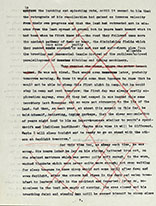  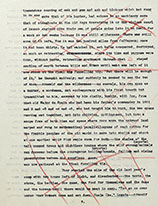 On page 9 of the rewritten typescript (below center), Faulkner replaces de Spain with Sam Fathers as the person who "taught [Ike] how and when to shoot," and retroactively makes Ike the central character of the already published "Old People" by summarizing the events of that story as part of his biography. The details of Ike's character are still in flux: on page 10 (below right) he has had "children," whereas the very first paragraph of Go Down, Moses calls Ike "father to no one." But by linking Ike to Sam Fathers and the boy protagonist of "Old People," Faulkner has clearly begun to think of using Ike to pull at least some of the hunting stories together: 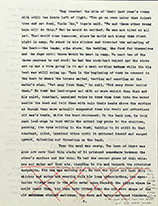 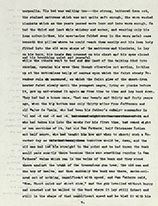 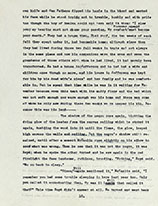 On the other hand, he has apparently not yet discovered how he can use Ike's place in what will become the McCaslin-Edmonds-Beauchamp family to connect the hunting stories with the rest of the material out of which Go Down, Moses will be made. As you can see from the pages below, the man who plays the part of Ike's moral antagonist here is named Don Boyd, a character who only appears in this typescript and the 1942 magazine publication of "Delta Autumn." The earlier draft of page 3 (on the back of page 4A, below left) gives Boyd a promising history of his own, but that backstory was cut in the revised typescript (below center and right), and when Faulkner revised the story again as a chapter in the novel, Boyd is replaced by Roth Edmonds, the great-great-great-grandson of Ike's grandfather, Carothers McCaslin. 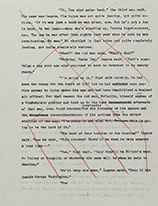  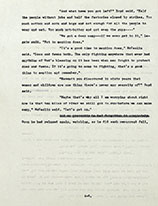 Thus while the writing and revising of "Delta Autumn" reveals Faulkner's imagination in the act of discovering Ike's potential as a major figure, as another idealistic and distraught son of the South like Quentin Compson (the original boy protagonist of "The Old People"), and as a link between the timeless woods and the southern past, it will be some months before Faulkner realizes the central role Ike can play in the examination of "the relationship between white and negro races here," which he told his publisher was the project of Go Down, Moses. The final version of the story expresses the anguish of that relationship as a family affair. The ending of the magazine story, when Ike discovers that Boyd's mistress is black, has its own power, as you can see from the three pages below - but nothing like the force with which that discovery hits Ike and the reader in the novel, when Ike also learns that Roth's mistress and her child are his blood relatives, linking this moment on the eve of World War II back to the antebellum world of slavery and sexual concubinage. 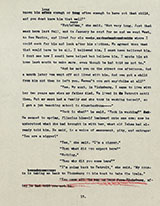 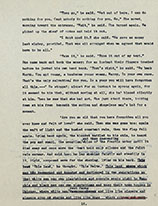 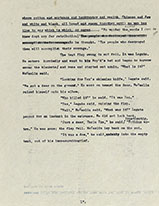 Citing this source:
|
